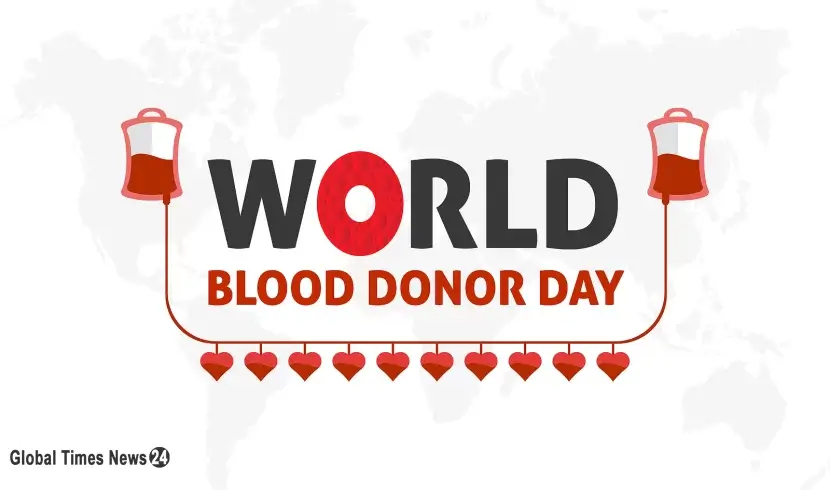World Cup journalist Grant Wahl died of Aortic Aneurysm
Journalist Grant Wahl died this week after collapsing in Qatar
Table of Contents (Show / Hide)

Grant Wahl, the American soccer reporter who collapsed while covering the World Cup in Qatar last week, died of a ruptured aortic aneurysm at age 49, his wife, Dr. Celine Gounder told CBS.
This condition had likely been developing for years, she said, with the initial symptoms occurring shortly before his death.
Here are the top things to know about aortic aneurysms, which caused about 10,000 deaths in 2019 according to the Centers for Disease Control and Prevention.
What is an aortic aneurysm?
An aortic aneurysm is a balloon-like bulge in the aorta, the main artery that carries oxygen-rich blood from the heart to the brain and the rest of the body.
The wall of the aorta is thick, which allows it to withstand the pressure present when the heart pumps blood through this vessel.
However, “when the wall of the aorta gets weaker, the pressure inside will push the wall out — causing an aortic aneurysm,” said Dr. Sanjiv Patel, a board-certified interventional cardiologist at MemorialCare Heart & Vascular Institute at Orange Coast Medical Center in Fountain Valley, Calif.
Genetic conditions, medical conditions, trauma, and other factors can weaken the walls of the aorta.
What are the symptoms?
People with an aortic aneurysm may not have any symptoms until it is large enough to push on and affect other parts of the body.
“Aortic aneurysms most commonly are found incidentally, such as when [a person is] undergoing imaging for a different reason,” said Dr. Christine Montesa, a board-certified cardiothoracic surgeon at Pomona Valley Hospital Medical Center in Pomona, Calif. “This is because they are usually asymptomatic.”
When an aneurysm does cause symptoms, it is often when there is a rupture or tear of the aorta, she said.
Patel said the symptoms will depend on the location of an aortic aneurysm. For example, an aneurysm in the chest can cause difficulty breathing, or chest or upper back pain. In contrast, an aneurysm in the abdomen can cause sudden belly pain or weakness in the legs.
Symptoms of an aortic aneurysm may include:
- Pain when swallowing or difficulty swallowing
- Difficulty breathing or shortness of breath
- A feeling of fullness even after not eating very much
- Hoarseness
- Pain in the jaw, neck, shoulder, chest, back or stomach
- Throbbing or pulsing feeling in the stomach area
- Swelling of the face, neck or arms
Who is at risk of aortic aneurysm?
Certain factors increase your risk of developing an aortic aneurysm. Patel said people with one or more of these risk factors may need to be checked by their doctor for an aortic aneurysm.
Age
People over age 65 have a higher risk of an abdominal aortic aneurysm.
Family history
People with a close family member — such as a parent, brother, sister or child — who have an abdominal aortic aneurysm are at greater risk of developing one themselves.
Because aortic aneurysms often don’t cause symptoms until they are larger or there are complications, “it is very important to know your family history,” said Montesa.
“If someone in your family died suddenly, or has a history of an aortic aneurysm or even aneurysms in other locations, undergo screening if necessary,” she said. “Share this information with your primary doctor, as well.”
Genetics
Several genetic conditions increase the risk of developing a thoracic aortic aneurysm, including:
- Ehlers-Danlos syndrome
- Loeys-Dietz syndrome
- Marfan syndrome
- Turner syndrome
- Familial thoracic aortic aneurysms
- Bicuspid aortic valve (BAV), or abnormal aortic valve
Some people carry a gene for one of these conditions, but do not know until they have a genetic test done.
How to reduce your risk
Small aortic aneurysms can sometimes be managed with healthy lifestyle changes to slow the growth of the aneurysm. This may include treating other medical conditions that increase the risk of rupture or dissection.
In some cases, such as for large aneurysms, your doctor may recommend surgery.
Healthy lifestyle changes include:
- Quit smoking
- Eat a heart-healthy diet to help lower high blood pressure and maintain healthy cholesterol levels
- Manage stress
- Get regular moderate physical activity. Patel said if you have an existing aortic aneurysm, you should avoid heavy weightlifting, which can increase the blood pressure in the aorta.
“Outcomes for patients undergoing elective repair [for an aortic aneurysm] are much better than if the aneurysm is discovered after complications develop, such as dissection or rupture,” said Montesa.
“Most importantly, listen to your body,” she said. “Don’t ignore or brush off symptoms if you’re not feeling well. Be your own best advocate.
URL :
News ID : 1622

 What’s Your Personality Type?
What’s Your Personality Type?
 Kamala Harris tests positive for COVID-19
Kamala Harris tests positive for COVID-19
 How to prevent Osteoporosis?
How to prevent Osteoporosis?
 Myers Briggs, Personality Types
Myers Briggs, Personality Types
 Rising infections put China's 'zero-COVID' policy under the microscope
Rising infections put China's 'zero-COVID' policy under the microscope
 Less than a month remaining until FIFA World Cup Qatar 2022
Less than a month remaining until FIFA World Cup Qatar 2022
 Who was Shireen Abu Akleh; How was she martyred
Who was Shireen Abu Akleh; How was she martyred
 Best way to quit smoking - Doctor's opinion & my experience - 100% guaranteed
Best way to quit smoking - Doctor's opinion & my experience - 100% guaranteed
 World Blood Donor Day: History, significance and objectives
World Blood Donor Day: History, significance and objectives
 First-class experience awaits fans at Qatar World Cup: Ambassador
First-class experience awaits fans at Qatar World Cup: Ambassador
